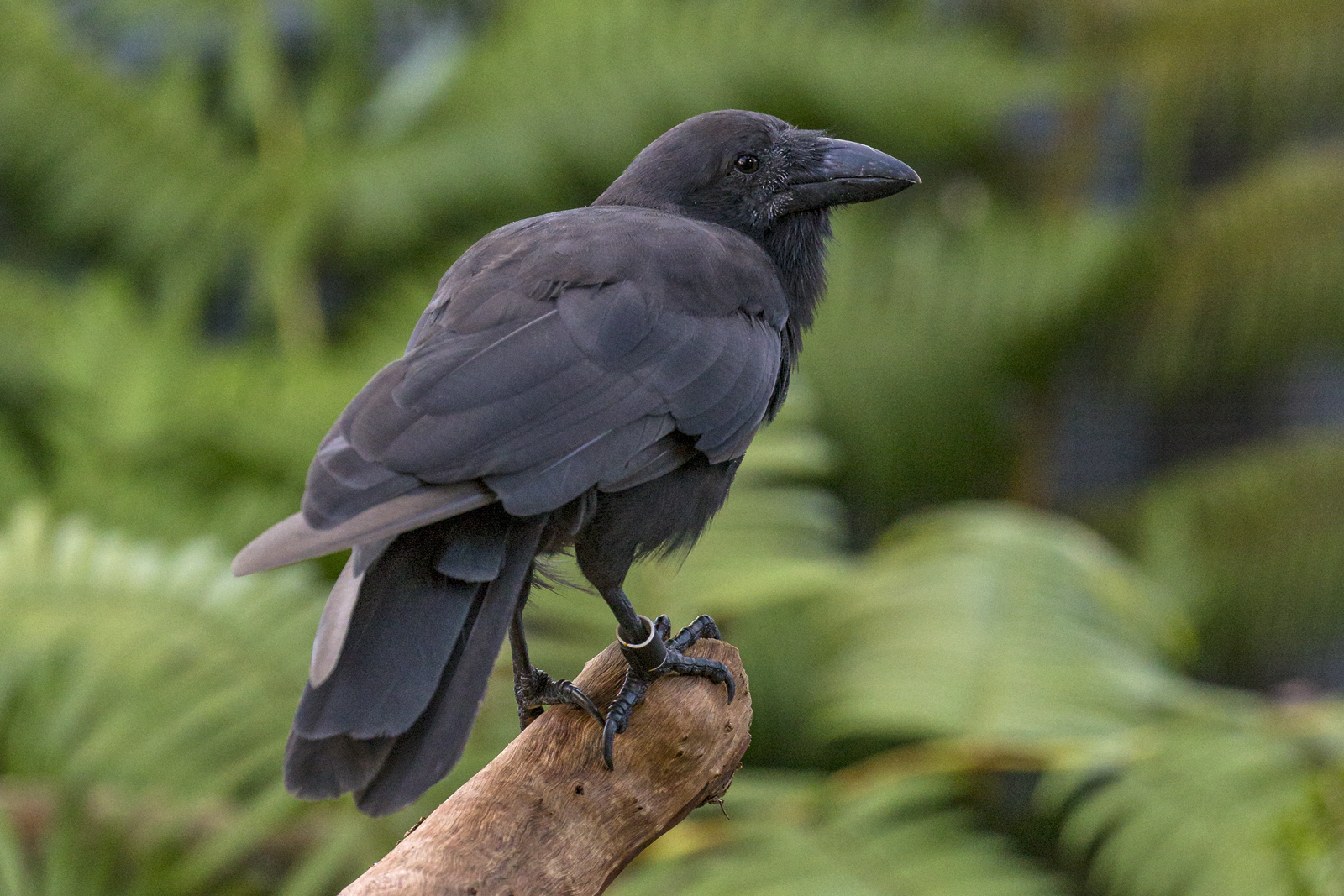
‘Alalā Doing Well in Aviary at Natural Area Reserve
Five Critically Endangered Hawaiian Crows Are Being Prepared for Release
The five male birds living in an aviary at the Pu’u Maka`ala Natural Area—a group of critically endangered young ‘alalā—are adjusting well to their new environment, according to animal care staff at San Diego Zoo Global’s Hawai‘i Endangered Bird Conservation Program. The birds were moved to the aviary in mid-October, to allow them to acclimate to the sights and sounds of a Hawaiian forest in preparation for their upcoming release. This reserve is an area that conservationists have worked to preserve, protecting native plants and species, and it represents the type of habitat ‘alalā were originally native to before they began to decline.
“Decades of intensive management by the state Department of Land and Natural Resources, in stewardship with local conservation partners, have led to the preservation of some of the most intact native-dominated wet and mesic forest on windward Hawai`i Island, known as Pu`u Maka`ala Natural Area Reserve,” said Jackie Gaudioso-Levita, project coordinator of the ‘Alalā Restoration Project, Hawai`i Department of Land and Natural Resources.
‘Alalā are an important part of the life of the Hawaiian forest, eating and assisting with the dispersal of native plant seeds. The reintroduction of this species, gone from the forest for more than a decade, is expected to be an important part of the overall recovery of the ecosystem.
“This reserve is the highest quality habitat, and is the best place on the island of Hawai`i for the reintroduction of the ‘alalā,” said Donna Ball, conservation partnerships biologist, U.S. Fish and Wildlife Service. “Pu’u Maka`ala Natural Area has all the components for the survival of this species—and soon it will also have the ‘alalā, a missing species of the ecosystem that has returned.”
The ‘alalā, or Hawaiian crow, has been extinct in the wild since 2002, preserved only at the Keauhou and Maui Bird Conservation Centers managed by San Diego Zoo Global. With more than 100 individuals of the species now preserved at the centers, conservationists are ready to put them back into their native forests. Although it was hoped to release the birds this month, the release was unexpectedly and cautiously postponed to ensure that the transmitters that will track the birds could be properly refined.
“‘Alalā are very intelligent and precocious birds and are inclined to play with and manipulate new items, so our ability to observe their behaviors closely and give them more time allows us to make adjustments to the tracking systems we will be using once they are released,” said Bryce Masuda, conservation program manager of the Hawai‘i Endangered Bird Conservation Program. “It is important for us to track these birds once they go out into the forest, so that we can continue to support them as they explore their new home.”
The mission of the Hawai’i Department of Land and Natural Resources is to enhance, protect, conserve and manage Hawaii’s unique and limited natural, cultural and historic resources, held in public trust for current and future generations of the people of Hawai’i and its visitors, in partnership with others from the public and private sectors.
The mission of the U.S. Fish and Wildlife Service is working with others to conserve, protect and enhance fish, wildlife, plants and their habitats for the continuing benefit of the American people. The mission of the Pacific Islands Fish and Wildlife Office is to conserve and restore native biodiversity and ecological integrity of Pacific Island ecosystems for the benefit of present and future generations through leadership, science-based management and collaborative partnerships.














